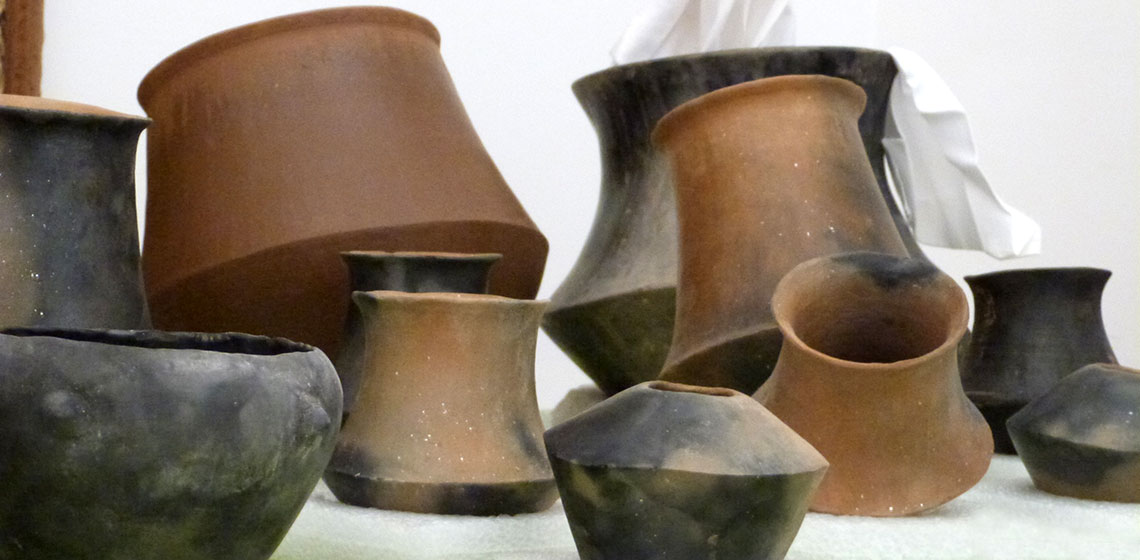
At the end of October 2018, nearly 30 experts – potters and archaeologists – met in the city of Mula (Murcia, Spain) to study Europe’s Bronze Age pottery-making techniques. Participants of the three-day workshop represented the Friends' Association of the Archaeological Site of La Bastida (ASBA) from Totana (Spain), the Mula Town Hall (Spain), the Autonomous University of Barcelona (Spain), the EXARC association (The Netherlands), the Halle State Museum of Prehistory (Germany), the Hometown Museum of Paraćin (Serbia), the Déri Museum of Debrecen, the Hungarian Academy of Sciences (Hungary) and the traditional ceramicists and potters of Totana (Spain).
The event was the initiation stage of the CRAFTER project (Crafting Europe in the Bronze Age and Today), implemented in the framework of the European Year of Cultural Heritage 2018 and the Creative Europe Program. The main goal of the project is to revive some of the most outstanding European Bronze Age pottery-making traditions with the help of modern artisans. Therefore, four potters from Spain, Germany, Hungary and Serbia will recreate ceramic vessels of the El Argar (Southeast Spain), the Únětice (Central Europe), the Vatin (South Serbia) and the Füzesabony (East Hungary) cultures. Their work will be captured in four documentary films, which will give a deeper insight into the technical hints of ancient ceramic art. In the autumn of 2019, the recreated artworks will be exhibited simultaneously in their four countries.
The Mula meeting began on Monday, 29 October, with a series of wrap-up lectures held in the City Archives building. In the morning, the archaeologists from the participating countries presented a comprehensive picture of the studied archaeological cultures. In the afternoon, the organizers discussed the screenplays of the documentaries and the technical details of the exhibitions, while the potters prepared for the next day's public presentations.
On the second day of the workshop, eight potters created copies of various Bronze Age vessels. As part of the presentation, craftspeople and archaeologists discussed several technology-related questions: the advantages and disadvantages of using various raw materials, the quality and quantity of tempers needed for creating certain types of ceramics, and the possible steps for building pots. It was very interesting to see that while the El Argar (Southeast Spain) and Únětice/Aunjetitz (Central Europe) cultures are characterized by simple and clear pottery forms, the ceramics of the Vatin (Serbia) and the Füzesabony (East Hungary) cultures are richly and elaborately decorated. Accordingly, the artisans from Spain and Germany demonstrated practical and fast handbuilding pottery techniques, while the potters from Serbia and Hungary presented their special tools for decorating and burnishing as well. We could see various stamps, texture and smoothing tools in use, made of wool, wood, ceramics, shells and pebbles.
Following a major shift in technology, the team could get acquainted with wheel-coiling and wheel-throwing techniques as well. At the end of the day, Caroline Jeffra (EXARC), the leader of the Tracing the Potter’s Wheel project, demonstrated early wheel potting by using a portable version of a Bronze Age Aegean potter’s wheel.
The archeologist-artisan festival culminated in a series of excursions on the third day. The team visited two of the most famous El Argar culture sites in Murcia: La Almoloya and La Bastida. The stone constructions and the underfloor cist burials of these hilltop ‘cities’ are still breathtaking! After the excursions, the company visited two of Totana’s traditional pottery workshops, Hernández and Bellón manufactures.
During this successful meeting we could all enjoy the attention and hospitality of our Mediterranean colleagues: good conversations have only been overcome by good food. We are really grateful for both of them!
Previously published at Magyar Tudományos Akadémia (mta.hu)
A short report on the first stage of the CRAFTER project
27 November 2018